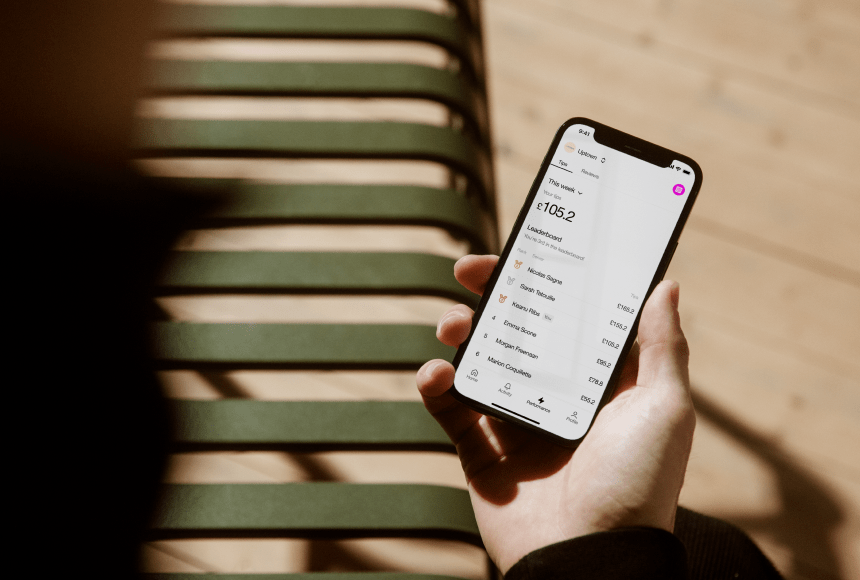
Unlocking New Growth Paths: Why Going Digital Can Boost Your Restaurant’s Success
Why Independent Restaurants Need Digital Transformation
Digital tools are no longer just for major chains. In today’s competitive UK dining scene, smaller, independent restaurants — whether it’s a cosy neighbourhood bistro or a bustling takeaway — find themselves up against shifting consumer expectations, complex supply chains, and a market that never sits still. According to The Caterer, a rising number of independents are adopting digital solutions to improve customer engagement, streamline operations, and stay resilient. But what exactly does “digitalisation of performance” mean for your day-to-day life as a restaurant owner? It can be as simple as harnessing a new online ordering platform, or as comprehensive as implementing data-driven analytics to track sales trends, stock levels, and staff efficiency. The outcome is the same: you make informed decisions faster, wow your guests with convenience, and reduce the stress of constant guesswork. Let’s explore how going digital can help you thrive rather than just survive.
1. Embracing Online Ordering and Contactless Payments
Let’s begin with a big one: online ordering. In 2025, diners expect that they can find your menu, place an order, and pay — all from the comfort of their smartphone. If you’ve held back on adopting these processes, you could be missing out on a sizeable group of customers who lean heavily on digital solutions.
- Expanding your reach: Online ordering platforms let you tap into a broader customer base, including remote workers or busy families who might otherwise skip a night out. By appearing on well-known delivery services or hosting your own direct online system, you become more discoverable to those browsing from home.
- Reducing friction at the table: Even for dine-in guests, contactless payment through a QR code can hasten the checkout process. With technology like sunday, diners simply scan, pay, and leave — no waiting for a card machine. This efficiency pleases those short on time and frees staff to focus on service rather than chasing payments.
- Data collection: Each online or contactless payment can generate valuable intel: average spend, popular orders, or returning-customer frequency. Analysing these can guide you in tailoring offers or identifying top sellers worth spotlighting on the menu.
These digital moves don’t require scrapping personal touches. If anything, they provide more time for your staff to chat with customers, share daily specials, and handle unique requests while letting technology handle repetitive tasks.
2. Tracking Sales, Costs, and Inventory in Real Time
Small restaurants frequently juggle tight budgets. Wasted stock or mismanaged labour can quickly eat into already narrow margins. Digital performance tools simplify record-keeping and forecasting, ensuring you have a tangible, up-to-date understanding of your finances.
- Real-time sales data: Imagine you can open a dashboard on your phone and instantly see how many covers you’ve had tonight, which dish is trending, or how far you are from the day’s sales goal. That’s the power of a well-integrated system, often made possible via your point-of-sale software or digital payment solution.
- Waste reduction: Inventory management apps let you track ingredient usage and sync them with recipes. If a particular sauce is going unused, you’ll spot the pattern in your weekly reports. That can spark changes, like running a special featuring that sauce to avoid binning valuable produce.
- More accurate ordering: By looking at historical data, you can forecast when you’ll need more fresh fish or how many pastries to bake each morning. This reduces last-minute dashes to suppliers, inconsistent stock, or panic when an item runs out mid-service.
Analysing these numbers takes guesswork off the table, so your time is spent fine-tuning your menu or engaging guests, not constantly troubleshooting supply issues or ballooning costs.
3. Deepening Customer Engagement through Digital Channels
Restaurant success is tied to loyalty and positive word-of-mouth — and in 2025, “word-of-mouth” mostly travels online. Beyond standard social media presence, you can leverage digital tools to personalise interactions, encourage repeat visits, and handle feedback efficiently.
- Personalised marketing: If your system knows a customer’s favourite dish (because they often order it online), you could send them a quick note about a new variation or a limited-time offer. Such direct, relevant communication feels friendly rather than spammy.
- Loyalty programmes: Many digital ordering platforms integrate with loyalty apps, automatically rewarding diners with points or freebies. This incentivises them to keep choosing your spot over competing places.
- Reputation management: Quick prompts post-payment nudge customers to leave a Google review. If the experience was great, they’ll share it immediately — bolstering your online rating. If not, at least you can directly address concerns before negative word spreads widely.
The result? A more personal connection with guests who, despite a busy routine, keep remembering your establishment. You harness the agility of digital channels while staying true to the local warmth that independents excel at.
4. Streamlining Operations for Greater Efficiency
Independent restaurateurs often wear multiple hats — from chef to HR manager. Digital solutions can alleviate at least some of these demands, clearing your plate for strategic thinking. A well-chosen system can keep track of scheduling, staff performance, or even table turnover speeds, all from a single interface.
- Automated scheduling: Instead of spending a chunk of your Sunday evening juggling staff rotas, use software that matches forecasted footfall to staff availability. Employees might even swap shifts digitally, cutting down on last-minute phone calls or confusion.
- Table management solutions: A digital floorplan can show which tables are free, who’s waiting for the bill, and which seats are booked next. Real-time updates let you reduce wait times and seat new arrivals quickly, boosting both revenue and customer satisfaction.
- Accurate time-logging: Some platforms sync with staff check-in/out, tying hours worked to payroll calculations. This helps you keep labour costs in check without sifting through manual spreadsheets.
Simplifying the operational chaos frees you to focus on elevating your restaurant’s unique character — new seasonal dishes, better staff training, or special events that keep customers intrigued.
5. Enhancing Guest Experience with Contactless Tech
Beyond the payment stage, contactless interactions can appear throughout the customer journey. Touchless menus (via QR codes) or self-order kiosks can speed up ordering, reduce errors, and encourage dynamic upsells. If you combine these with a warm, personal service approach, you might find diners spending more while feeling more comfortable.
- Automatic upselling suggestions: Digital menus can highlight recommended sides or a perfect drink pairing for each item. Because the suggestion is woven into the interface, it comes off as helpful rather than pushy, which can nudge that average transaction upward.
- Allergy customisations: If your app allows diners to note allergies or dietary restrictions while ordering, you lower the risk of mix-ups. That sense of trust can lead to stellar reviews and repeat business from grateful patrons.
- Fewer errors in the chain: A direct digital path from guest to kitchen reduces the risk of misheard orders, building confidence that the meal will arrive exactly as they want it.
While some independents fear that too much automation can strip away charm, the key is balance. Let technology handle the mundane or repetitive tasks, leaving your staff to provide the personal touches diners love.
6. Managing Data Responsibly and Safely
Of course, digital transformation comes with cautionary tales. Handling payment info or personal data means you shoulder responsibility for robust security. The last thing you need is a data breach damaging trust, especially as diners become increasingly aware of privacy issues.
- Choosing reliable providers: Ensure your POS or payment partners comply with PCI DSS and GDPR rules, keeping card and personal data protected.
- Staff training: Everyone from the floor manager to the bar staff should know basic data security etiquette. Even small slip-ups, like writing down card info, can lead to big problems.
- Clear privacy policies: If you collect emails for a newsletter, let subscribers know how you’ll use their data and honour their opt-outs promptly. Transparency goes a long way in establishing credibility.
Approach data responsibly, and diners won’t hesitate to share personal preferences, ensuring your digital systems remain an asset, not a liability.
7. Balancing Tradition with Tech
One hesitance many independents hold is the fear that digital adoption might overshadow their personal touch or brand heritage. Quite the opposite—by freeing staff from repetitive tasks, you allow them to be more present, greet regulars, or chat about your daily specials. The digital layer can exist behind the scenes, quietly boosting convenience and efficiency.
- Gradual implementation: You don’t need to swap everything for an app overnight. Maybe start with a new reservation system, test a digital payment tool, then expand to advanced analytics as you build confidence.
- Staff buy-in is key: If your team sees how a modern solution reduces friction or spares them from repetitive data entry, they’ll champion it instead of resisting change. Provide training and invite their feedback, ensuring smooth integration.
- Retain personal flair: For instance, if your chef’s special always comes with a personal anecdote, keep that in your digital menu description. Let technology support that story without replacing it.
The best digital transformations complement your restaurant’s soul, not replace it. Build from your strengths—like that comforting interior or signature dish—and let tech fill in the operational gaps that consume resources or lead to revenue leaks.
Setting Yourself Up for Sustainable Success
As the hospitality world evolves, ignoring digital tools becomes riskier. Independent restaurants can’t rely on passing foot traffic alone—modern diners demand swift online services, frictionless pay methods, and a sense that you can keep pace with their tech-savvy lifestyles. Yet, the beauty here is that digital solutions can adapt to your scale, your brand, and your budget. They’re no longer just for big corporations with deep pockets.
Whether you start by implementing a digital payment platform like sunday, or by hooking up your kitchen stock to real-time analytics, each small step lifts part of the burden. Freed from some operational complexity, you can devote more energy to creative menus, welcoming service, or local sourcing initiatives your community will adore.
Performance digitisation isn’t about turning your bistro into a sterile, screen-filled environment. It’s about weaving technology into the background so your staff, your cooking, and your relationships with diners shine more brightly. With the right approach, it can be a golden opportunity—boosting efficiency, fine-tuning costs, and building a loyal customer base that sees your restaurant as delightfully modern yet comfortingly personal. If that’s not a win for independents in 2025, what is?
Find out more today
Drop us your details below and we’ll reach out within the next 24
Get to know your team.
Gather insightful data about your staff in real-time.


